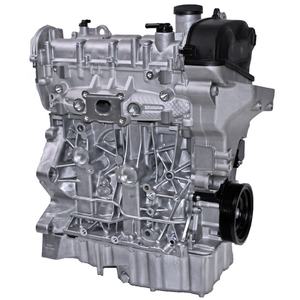Update Your Car with a New Opel Corsa Engine
Wiki Article
Checking Out the Inner Workings of a Compact Automobile's Engine System
As drivers, we frequently consider approved the complex processes that occur within the boundaries of our car's engine system. The portable yet intricate machinery that moves us onward is a marvel of design precision and sychronisation. From the controlled explosions in the burning chamber to the precise timing of gas injection, every element plays an important duty in the smooth operation of the engine. In this expedition of a compact automobile's engine system, we will certainly decipher the inner operations of this mechanical harmony, clarifying the secrets that drive us ahead on our daily journeys.Burning Process Introduction
The combustion process in a portable lorry's engine system is a critical system that efficiently converts fuel right into power to power the lorry. This process takes place within the combustion chamber of the engine, where gas and air mix, ignite, and create controlled explosions. The burning procedure is composed of 4 main stages: intake, exhaust, compression, and power.Throughout the intake phase, the piston moves downward, pulling in a mixture of air and gas into the burning chamber. The next stage, compression, entails the piston moving upwards, compressing the air-fuel blend to increase its strength. Subsequently, in the power phase, the ignition system stirs up the compressed blend, resulting in a fast expansion of gases that requires the piston pull back. This descending activity generates the power required to drive the car. Ultimately, in the exhaust stage, the scorched gases are removed from the burning chamber via the exhaust shutoff, preparing the chamber for the following cycle. This cyclic burning process is basic to the operation of a portable vehicle's engine system, making sure reliable energy conversion for propulsion.
Piston and Cylinder Communication

The piston's accurate fit within the cylinder is necessary for keeping optimum compression and preventing energy loss during combustion. Limited clearances in between the piston and cyndrical tube wall surfaces make certain efficient securing, allowing the piston to relocate efficiently without permitting gases to leakage past. Correct lubrication is likewise crucial to reduce friction and put on in between these elements, improving long life and efficiency.
Moreover, the style and materials used in manufacturing the piston and cyndrical tube influence engine effectiveness and sturdiness. Modern engines typically employ light-weight yet durable materials like light weight aluminum alloys for pistons and cylinder liners to decrease inertia and improve thermal efficiency. Generally, the harmonious interaction between the piston and cyndrical tube is basic to the engine's performance and general performance.
Gas Injection System Capability
Gas shot systems in small vehicle engines play Web Site a critical function in precisely providing fuel to the combustion chamber for reliable and controlled ignition. The fuel shot system works by infusing fuel right into the combustion chamber at the optimum moment throughout the engine's operation (opel corsa engine). This accurate timing makes sure that the fuel mixes evenly with the air for proper burning, resulting in boosted fuel efficiency and decreased emissionsThere are mostly 2 types of gas shot systems used in portable lorry engines: port gas injection (PFI) and straight gas shot (DFI) PFI systems inject gas into the consumption port prior to the consumption shutoff, while DFI systems infuse gas straight right into the combustion chamber. Both systems have their advantages, with DFI supplying far better fuel atomization and PFI giving a more affordable option.
Recognizing Engine Cooling Systems
Effective operation of a compact vehicle's engine counts greatly on the efficiency of its cooling devices. Engine cooling is essential to protect against getting too hot, which can result in major damages and lowered performance. The cooling system in a portable car commonly is composed of several parts collaborating to manage the engine temperature. One important part is the radiator, which makes use of coolant to soak up warmth from the engine. As the warm coolant streams via the radiator, it launches heat into the air, cooling before going back to the engine. The water pump flows the coolant via the engine and radiator, making sure a regular circulation to manage temperature level. In addition, the thermostat aids manage the coolant circulation to keep optimum engine temperature level. Some cars additionally have cooling down followers that trigger when added air conditioning is needed, such as throughout rush hour or heat. Understanding these engine cooling systems is crucial for preserving the efficiency and durability of a small automobile's engine system.
Exhaust System Elements Explained
The ideal functioning of a portable automobile's engine navigate to this site air conditioning systems depends on a Get More Information corresponding system understood as the exhaust system, which consists of numerous necessary components for making certain efficient discharges and engine efficiency. The exhaust manifold collects exhaust gases from the engine's cyndrical tubes and paths them to the catalytic converter.One critical component of the exhaust system is the oxygen sensing unit, which keeps an eye on the oxygen degrees in the exhaust gases to help manage gas usage and ensure optimum engine efficiency. opel corsa engine. Furthermore, the resonator might exist in some exhaust systems to minimize noise degrees. Generally, the exhaust system plays a crucial duty in keeping engine effectiveness, decreasing hazardous emissions, and making sure a quieter driving experience for small car owners

Conclusion
In conclusion, the portable automobile's engine system is a complex mix of components that collaborate to help with the combustion procedure, convert fuel right into power, and get rid of waste gases. Understanding the internal workings of the engine system, consisting of the piston and cyndrical tube communication, fuel injection system, engine air conditioning systems, and exhaust system components, is critical for maintaining ideal efficiency and efficiency of the vehicle.The combustion procedure in a portable car's engine system is an important device that efficiently converts fuel right into power to power the car.Fuel injection systems in portable automobile engines play an essential function in precisely providing gas to the combustion chamber for reliable and controlled ignition.There are primarily two kinds of fuel shot systems used in small automobile engines: port gas injection (PFI) and direct fuel injection (DFI) Recognizing these engine cooling systems is vital for maintaining the efficiency and long life of a small automobile's engine system.
The ideal functioning of a portable automobile's engine air conditioning mechanisms depends on a corresponding system understood as the exhaust system, which makes up various essential elements for guaranteeing reliable discharges and engine performance.
Report this wiki page